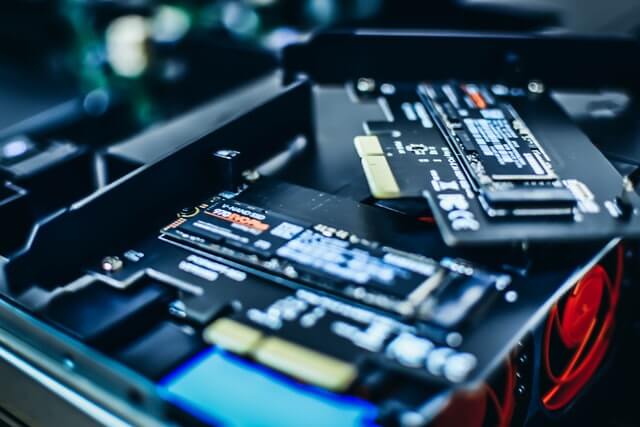A storage device is an object used to store and/or access data. There are various types of storage devices, such as Hard disk drive (HDD), solid-state drive (SSD), USB drive, memory card, etc.
Groups of Storage Device
Storage devices can be generally split into two groups: internal and external.
Internal storage devices are those that reside inside your computer or laptop; e.g., the hard disk drive (HDD) and solid-state drive (SSD).
External storage devices are those that connect to your computer externally; e.g., USB drives, memory cards, etc.

Today we will focus on internal storage devices and take a closer look at their differences and similarities: what distinguishes them from each other and what they have in common.
Before we discuss the differences between internal storage devices, let us first take a look at what they all have in common:
They are all attachable to a computer device – either laptop or desktop. They can be used to store data – e.g., music, movies, documents, etc. – which can then be accessed by said computer device at a later date.
The main difference between these internal storage devices is how store data and read/write data from the storage device itself. This will clear as we discuss further differences;
Internal Hard Disk Drives (HDD)
1) Uses rotational magnetic platters as its storage medium – e.g., hard disk – which can be read and written to by a mechanical arm – the hard disk drive head – that reads and writes data on the platters, respectively.
2) A single platter has a diameter between 3.5” and 5” – e.g., a typical HDD for your desktop PC will have three of those plus one mini-platter containing an SSD cache –
3) A single “side” of a platter is called a Track – A common HDD has around 200 tracks per side
4) Tracks are split into sectors, typically 512 bytes each or 4096 bytes each
Internal Solid-State Device (SSD)
1) Uses flash memory as its storage medium, which is read and written to by an integrated circuit (IC) – e.g., NAND flash memory chip(s) –
2) An SSD has multiple chips of varying sizes on a circuit board, typically four or eight per device; this number can vary depending on the type and also the size of storage desired. – The controller chip communicates with the host machine via a data link protocol, such as SATA or PCI Express/NVMe, etc.
Internal Memory Cards
Internal Memory Cards are devices that are inserted into your computer’s media card slot to transfer files from your camera, phone, or another electronic device onto your computer.
They usually come in standard SD card form factors but there are many other types to choose from, such as MiniSD, microSD, etc.
There are 2 types of internal memory cards: “Normal” and “High Capacity”. Normal capacity cards can store anything from 128MB to 64GB; High Capacity cards start at 32GB and go up to 256GB+, depending on the size of the card you purchase.
All in all, storage devices allow us to transfer important files from one device to another easily and conveniently.

